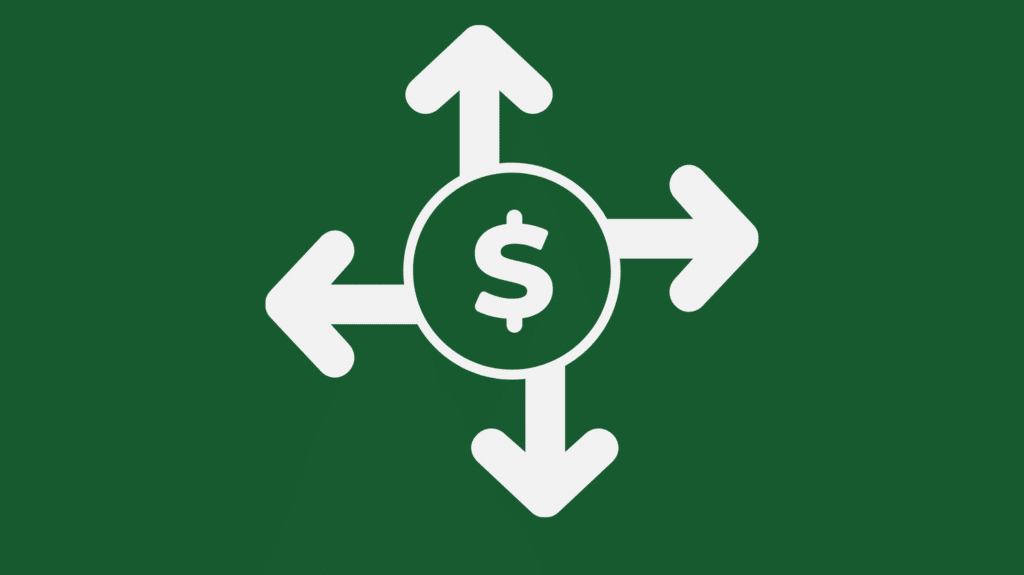Tracking your business expenses is a critical part of managing your financial health. By streamlining the process of recording expenses, you can more easily identify and regulate spending and make timely adjustments. In this article, we’ll look at what business expenses you need to track, how to organize them, and introduce some tools to help you.
What Are Business Expenses?
Business expenses are the costs of doing business. Every business has its own unique set of expenses.
Incorporating expenses into your business plan can help you stay financially afloat during tough times. Knowing what to expect and how much money you will need to cover them can keep your operation running smoothly.
Why Track Business Expenses?
Expenses are deducted from your gross income to give you your net income—the bottom-line profit generated by your business. Since your business has more control over its expenses than its income, it’s important to stay vigilant in managing your expenses, so they don’t burn up your earnings
Here are the major ways that expense tracking helps small businesses:
Maintains Budget Accountability
Creating a budget for your business will help you keep track of your spending and ensure you stay within your means. Good expense tracking reveals where and when you need to stop your spending. With financial clarity, it is easier to make good business decisions.
Let’s say you sell popsicles. Your expenses are juice and sticks. A major juice sale is happening this month, and you use most of your popsicle profits to buy a bunch before the sale ends. Proper expense tracking would tell you how much juice you’ve bought each time.
Identifies Negative Spending Issues
You need to track your spending to identify wasteful spending habits that you can quickly change to improve your financial situation.
At your popsicle stand, lime was your best-selling flavor last year. This year, you’re selling more cherry popsicles than lime-flavored ones. Your expense tracking reveals that the company spends twice as much on lime juice as cherry juice. Thanks to your data, you can adjust your spending to meet your current needs, avoid overspending, and minimize debt.
Expenses You Need to Track
There are a few key expenses that every business should always track. Here are the most important ones to monitor:
Rent/Mortgage
Keeping track of your rental or mortgage payments throughout the year can help you accurately report them on your tax return. That way, you can take advantage of all the deductions and credits available.
Utilities
This category tracks expenses like electricity, water, heat, phone, and internet services. Avoid lumping your utility costs with your rent or mortgage; utility costs are based on usage and will vary over time.
Advertising and Marketing Expenses
Advertising costs are associated with promoting anything. It pays for ads in print and digital media, social media and website commercials, and other services used to increase sales for a company. The cost of advertising can be quite high, which is why companies often use marketing research to target their ads more effectively.
Professional Fees
Professional fees are prices charged by individuals specially trained in specific fields, like lawyers and accountants. Prices for professional services differ based on many factors, including the individual’s experience, the type of service provided, and the demand for it. For example, a first-time lawyer may charge less per hour than a veteran attorney with decades of experience. Similarly, an accountant who provides tax preparation services may charge more during tax season than at other times.
When choosing a professional, it is important to consider the price and the individual’s qualifications and experience. It is also important to ask for referrals from friends or family members who have used the same professional.
Payroll
If you are responsible for paying employees, it’s important to categorize salaries, taxes, and other deductions. If you own a small business and pay yourself with company money, you must categorize these payments as well.
Contractor Payments
Independent contractors can work however they please, but they don’t receive benefits like health insurance and paid time off. Businesses routinely use contractors for one-time jobs or special projects.
Because of the differences in payment structures and taxes, contractor payments and payroll expenses must be strictly divided. Misclassification can mean tax penalties and fines from the government, so learn about the differences between employees and independent contractors.
Tracking Helps You Categorize and Prioritize
By tracking these key expenses, you’ll better understand where your money is going and how much it costs to run your business. This information can help you make informed decisions about where to cut costs and how to allocate your resources.
Your Receipts
Keeping copies of business-related receipts is a great way to manage and track expenses. Doing so can help during tax season, as these records are important if you need to provide proof for tax write-offs and deductions.
If you’re storing hard copies of your receipts in a box under the desk, it’s time to upgrade. Get a small file cabinet with folders labeled with your spending categories. Once you set up the organization, you can drop your receipts in the correct folder. Keep your receipts organized by date to identify peaks and valleys in your spending.
Expense Tracker Apps
Many small business owners believe a monthly expense tracker app is the best way to track business expenses. Although they tend to be less robust than accounting software programs like QuickBooks or Xero, a monthly expense tracker app can be a helpful tool for small business owners and individuals who want to keep better tabs on where their money is going.
Several different monthly expense tracker apps are available, so it’s important to find one that best suits your needs. Consider the app’s features, ease of use, price, and device compatibility.
To get started, below is a short list of some of the best monthly expense tracker apps. These tools will make the job easier if you must piece together a purchase history or keep track of expenses.
Expensify
Expensify is a mobile used by freelancers, entrepreneurs, and business owners. The app records expenses such as gasoline, travel, and food. Once users take pictures of their receipts, artificial intelligence identifies the transaction’s merchant, date, and amount, automatically categorizing and saving the expense.
Bill.com
Bill.com is an online tool for managing finances. It can track business expenses and income, create invoices and handle bank reconciliation. It was created initially as an organizational resource for small businesses.
PayPal
A PayPal Business Account allows small business owners to process payments quickly and easily and can also be used to keep track of spending through the account. This one is ideal for businesses that prefer to accept most or all of their payments through PayPal.
Gusto
For small businesses handling their payroll and HR needs, Gusto is a program that can integrate with tools like Expensify and QuickBooks to track wages and employee benefits. The software can also organize expenses like mileage and travel reimbursements.
The Bottom Line
Running a successful business means taking the time to track expenses across all departments and projects. If not done correctly, these expenses can add up and result in financial challenges come tax season. However, with the help of a good expense tracking system, it’s easy to stay on top of your finances and keep taxes at a minimum.
When a business owner asks, “where did my money go?” expense tracking provides the answer. By keeping track of your expenses diligently, you can easily make necessary adjustments to improve your efficiency and increase your ability to grow.

